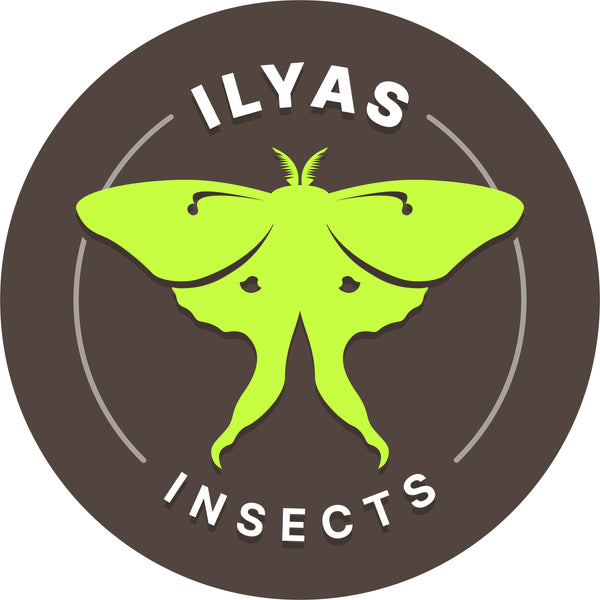Ilyas Insects
Graellsia isabellae
Graellsia isabellae
Kan beschikbaarheid voor afhalen niet laden
WHEN ORDERING: I cannot gurantee alive arrival to countries outside Europe
NO WINTERPACKING REQUIRED
Graellsia isabellae - Spanish Moon Moth
Distribution
-
Endemic to mountainous regions of France and Spain.
-
Has been observed in Switzerland as an introduced population; that Swiss population may derive from individuals from Spain and France.
-
The species is often called the “Stained Glass” moon moth.
-
It is a relict species, surviving in stable refugial mountain habitats over long geological times.
Biology & Life Cycle
-
Voltinism: Univoltine (one generation per year).
-
Flying period: Adults are found from April to July, depending on local climate.
-
Wingspan: About 60–100 mm (medium-sized)
-
Host plants: Larvae feed only on pines (Pinus spp.), especially Pinus nigra and Pinus sylvestris.
-
In captivity, other Pinus species may be accepted, though the moth in the wild is quite specialized.
Rearing & Husbandry Notes
Eggs & Early Instars
-
Eggs hatch in 10 to 15 days (depending on temperature)
-
After hatching, larvae should be placed on cuttings of pine (fresh, pesticide-free) in well-ventilated containers.
-
Young larvae (L1–L2) can be reared in plastic boxes with ventilated lids.
Later Instars & Growth
-
From L3 onward, larvae may be transferred to sleeves (mesh “bags”) or larger ventilated cages.
-
It is possible to rear the caterpillars from egg to cocoon in ventilated boxes, provided they are kept extremely dry.
-
Moisture control is critical: Many breeders fail with G. isabellae because they keep larvae too wet.
-
Replace pine twigs every 3–5 days. Keep the container clean of frass (droppings) and mold.
-
Avoid overcrowding: stress from contact causes smaller, weaker adults and higher mortality.
Pupation & Overwintering
-
After 5 instars, larvae spin cocoons. They can be offered moss or similar substrate in which to spin.
-
Cocoons must be kept dry. They are tolerant of cold and frost, indeed, the species’ wild habitat experiences freezing winters.
-
Overwinter the cocoons in a cold, dry place (e.g. cellar, garden shed, or outdoors in garden in many temperate climates).
-
Be cautious with fridges, humidity inside fridges may dry cocoons too much and lead to death.
Adult & Breeding
-
Some adult males show little or no mating drive (“apathic” males) in captivity this is a known challenge.
-
Hand-pairing is possible but more suited for experienced breeders.
-
One technique: keep virgin females alone, then introduce males at night when females are calling.
-
The species hybridizes readily with Actias genus moths in captivity, showing its close affinity.
Deel





